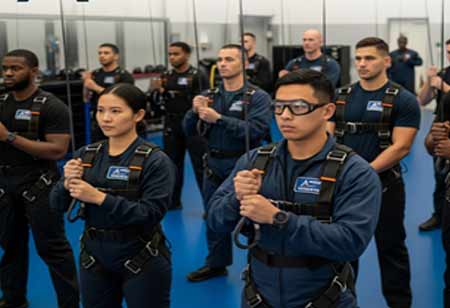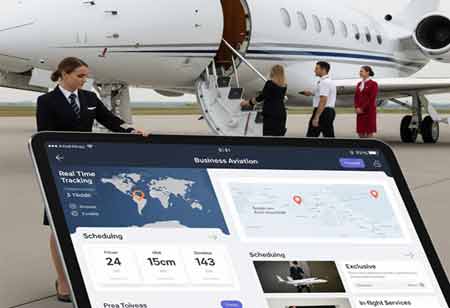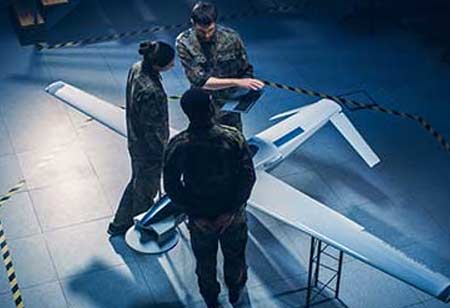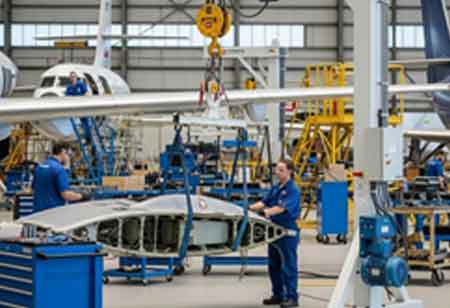Advanced airborne training services have emerged as critical in shaping competent, mission-ready aerial forces. As the demands of modern defense strategies continue to evolve, so does the complexity of the training required to prepare personnel for high-stakes, multifaceted operations. These specialized training programs go beyond conventional instruction, offering immersive, technologically integrated experiences that closely replicate real-world conditions. Top-tier airborne training services are pivotal in enhancing tactical proficiency, supporting national security objectives, and ensuring strategic superiority in rapidly shifting global environments by focusing on operational precision, adaptability, and cross-domain coordination.
Emerging Dynamics in the Advanced Airborne Training Landscape
The domain of advanced airborne training services is undergoing a significant transformation, reflecting the growing complexity of aerial missions and the strategic emphasis on multi-domain operations. Modern warfare and defense readiness increasingly depend on highly specialized aerial capabilities, necessitating training programs that mirror real-world combat conditions. These services have grown beyond basic airborne instruction to encompass integrated simulations, tactical coordination, and state-of-the-art aerial technologies. As a result, advanced airborne training has become a vital pillar of national defense systems, supporting the continuous evolution of air assault, reconnaissance, and rapid deployment capabilities.
This shift reflects a move toward realism, adaptability, and interoperability. Training curricula are tailored to address mission-specific requirements, including high-altitude jumps, equipment drops, precision targeting, and night-time operations. Modern airborne training emphasizes seamless coordination with ground, naval, and cyber units, reflecting the interconnected nature of contemporary conflict environments. As training becomes more comprehensive, airborne units are better prepared for various operational theaters, enhancing their effectiveness and survivability in mission-critical scenarios.
Operational Complexities and Adaptive Measures
Despite the clear momentum in the sector, advanced airborne training services encounter a series of operational challenges that require strategic resolution. Integrating emerging technologies such as artificial intelligence, drone swarm coordination, augmented reality, and machine learning into traditional training structures is a key concern. These technologies offer immense value by enhancing simulation fidelity and decision-making support, but they also demand significant investments in infrastructure and human capital. To address this, service providers are implementing layered integration models. These models allow for the progressive incorporation of new systems without disrupting existing training flows, ensuring that personnel gradually adapt to higher levels of technological complexity.
Another notable challenge pertains to the availability and retention of expert trainers. Advanced airborne training requires instructors with a rare combination of combat experience, technical knowledge, and pedagogical skills. The demand for such professionals often exceeds supply. This issue is being met with robust professional development initiatives. Training service providers are establishing continuous learning programs and collaborating with military academies and defense researchers. Through these efforts, instructors are kept current on evolving tactics and technologies, ensuring the long-term quality and relevance of the training they deliver.
Logistical and environmental challenges are also prominent in the airborne training sector. Simulating mission conditions in remote or unpredictable environments, such as mountainous terrain or coastal regions, involves complex coordination and high operational costs. To overcome this, portable and modular training systems have been introduced. These systems replicate full-scale training environments while maintaining mobility and cost-efficiency. Such solutions allow consistent training standards regardless of location, supporting strategic agility and deployment readiness.
Predictive maintenance technologies and efficient resource scheduling address the challenge of maintaining aircraft and equipment during intensive training sessions. Sensors and diagnostic tools monitor aircraft health in real-time, reducing downtime and ensuring mission availability. These enhancements improve training continuity and safety, reinforcing operational reliability across training cycles.
Strategic Growth and Stakeholder Value Creation
The trajectory of advanced airborne training services reveals numerous long-term opportunities for stakeholders, including defense institutions, private training providers, equipment manufacturers, and allied partners. One of the most impactful developments is using advanced data analytics to enhance training outcomes. Service providers can personalize instruction based on individual and unit-level metrics by collecting performance data during training exercises. Adaptive learning pathways ensure that weaknesses are addressed efficiently and that strengths are reinforced, leading to improved performance across all stages of training. This data-centric approach enhances personnel’s effectiveness and offers actionable insights for mission planning and strategy refinement.
The growing use of virtual reality and mixed-reality platforms boosts sector growth by providing safe, cost-effective training alternatives. These technologies simulate high-risk scenarios like urban assaults and aerial insertions, allowing personnel to build muscle memory and confidence in a controlled environment. This approach promotes sustainable training while limiting aircraft and support systems wear.
Interoperability is essential for advancing training programs. Modern airborne training aligns with joint-force doctrines, integrating ground, naval, and cyber components of national and allied forces. This fosters a unified training culture, leading to quicker and more coordinated responses in joint operations. Consequently, mission readiness and force coordination improve, enhancing diplomatic collaboration and preparedness for defense planning among international security stakeholders.









